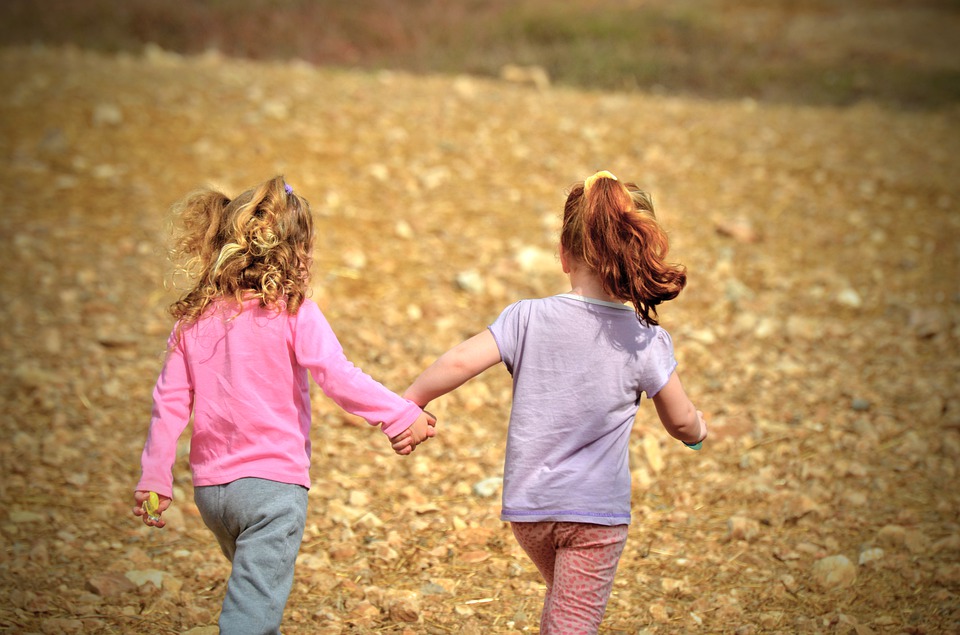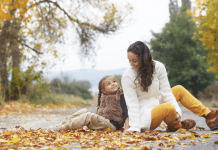Around 115 kids are abducted by strangers in our country every year. Lightning strikes approximately 300 people in the same time period. My point? Your child has a greater chance of being struck by lightning . . . twice . . . than he or she does of being kidnapped by a stranger.
More good news? While 800,000 children are reported missing every year, more than 99% of these children return home alive. (A majority of them are lost for just a couple of hours, went to a friend’s house without permission, or have run away. Another quarter of them are abducted by a family member.)
In the United States, an average of eleven children die every week in car accidents. Yet, we harbor no hesitation when it comes to placing them in our vehicles. We go to school, the store, the park, and a variety of other locations every single week. Why aren’t we gripped with fear each time we turn the key in the ignition?
A study by pediatricians at the Mayo Clinic found that nearly three-fourths of parents fear their child being abducted. This fear outranks car accidents, sports injuries, or drug addiction. Statistically speaking, these “fear priorities” don’t make any sense. But fear remains a powerful emotion — especially when it comes to our kids.
The reason we fear “stranger danger” so much more than our own cars? Partly, the sense of control. It’s similar to the reason so many more people are afraid to fly than travel by car. The statistics bear out that flying is MUCH safer than traveling by road. We hand over control of a situation to a pilot when we step on an airplane. When we drive our cars, when we transport our kids in our cars, at least our hands grip that steering wheel. We maintain some level of power over what happens.
I think the terror that grips our hearts when imagining our kids in the hands of stranger who means harm also plays a part. Can there be a more horrendous feeling than learning that your child has been abducted? Wondering what is being done to them? How scared they must be? It makes me sick even to write about it now.
Traditional media and social media are generally awful about making us believe that our children face dangers from strangers lurking behind every bush and leering from every aisle at Target. Do you watch Law and Order: SVU regularly like I do? If so, you’ve watched dozens of episodes in which children are placed in unspeakable situations. Ever turn on CNN? If a (white and preferably blonde) child goes missing, the disappearance gets 24/7 coverage. Thanks to the 24-hour news cycle and the internet, we now have access to information about missing kids whose names we never would have even known twenty or thirty years ago. That publicity can be great in helping a child get home. However, it also burrows into our psyche and makes us think these awful things happen all the time.
And sometimes? The terrifying story being shared on social media proves completely untrue. Who remembers the story posted by a terrified mom in Southern California who claimed that her children were almost victims of sex trafficking in IKEA? Shared more than ONE HUNDRED THOUSAND TIMES on Facebook, the situation sounded so scary! It fed the narrative that we are right to stand guard in fear for our families at all times. It was also, according to experts in protecting children from trafficking, almost certainly not true. In fact, the story may actually be detrimental to teaching parents about the true warning signs. But that many shares and tapped emotions later, the veracity of the story no longer mattered.
I believe, though, that our parenting through fear causes our kids to miss out on critical parts of their childhood. If you are like me, you spent hours outside with friends and without adults guiding your play. I hopped on my bike and pedaled several blocks to a friend’s house. I played in the woods. My friends made up games and figured out our own disputes when we couldn’t agree on the rules. We learned to problem solve, and we built confidence in our own abilities. We used our imaginations, and we offered essential nourishment to our bodies and our brains. And we thought we were just playing.
Dr. Peter Gray, who has written extensively on the importance of the freedom of play even asserts that, “By depriving children opportunities to play on their own, away from direct adult supervision and control, we are depriving them of opportunities to learn how to take control of their own lives. We may think we are protecting them, but in fact we are diminishing their joy, diminishing their sense of self-control.”
Many believe my attitude of “just go outside and play” to be lazy parenting. This belief implies that I don’t want to spend time playing with kids — or even watching them as they play. This is simply not true. Instead, my decision to let my kids “roam the neighborhood” is a deliberate one on my part. It comes with ongoing instruction about making smart decisions and allows for widening boundaries as they grow older.
I have chosen to give my kids this freedom because I think it’s important — not for my own convenience. I am fortunate to live in a neighborhood in which many other parents feel the same. Kids still travel in small packs to the nearest basketball court or run down the street alone to see if a friend is available to play. There are bikes scattered in front yards and children of all ages are playing and exploring (and sometimes arguing) until dark. Video games are saved for lousy weather days — much like my Atari 2600 back in 1982.
I know it’s not easy to send kids outside and not have your eyes on them every second. I still get a little anxious when it takes several houses before I find the yard in which my son is playing. And each mom knows her child best and what his or her boundaries should be. But, I do ask that you consider taking a deep breath the next time you are gripped with fear over a believed threat to your child.
Let your five-year-old daughter walk to the ice cream truck by herself while you stand in the front yard a few houses away. Let your nine-year-old son walk around the block to his friend’s house — even if you make the other mom promise to call you the second he arrives. Open your window so you can hear and see the group of kids on your block play in the yard, but you aren’t right there to manage every moment. Your kids will be so proud of the independence you’ve afforded them.
















